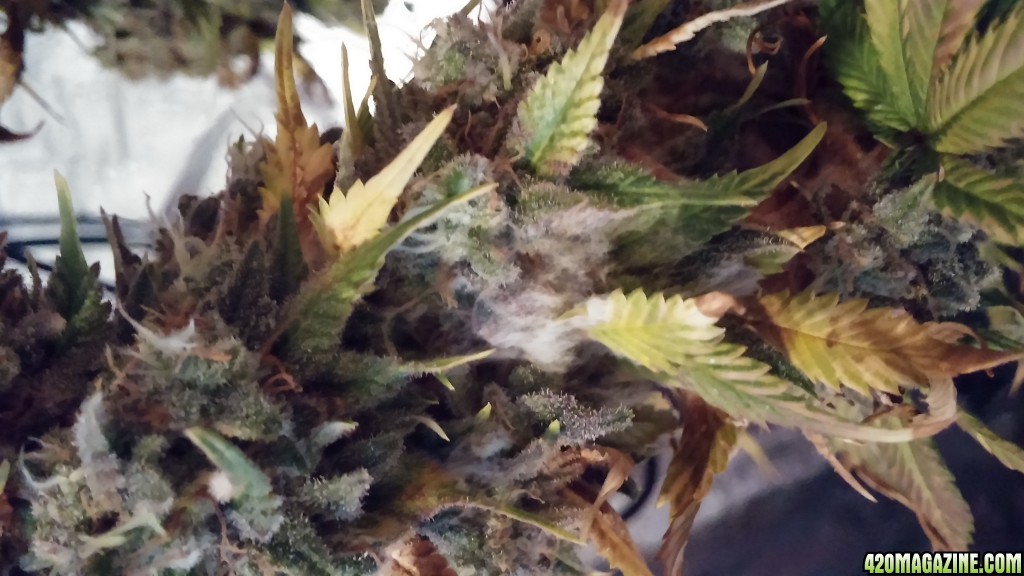
Not sure how this could happen.. Always have less then 50% humidity, fans going? I don't understand.. so many problems with this plant, her harvest was due for thurs, now i'm chopping today and picking through all moldy shit and saving and just making BHO.
Is there anyway I can save parts of the bud? Or are they all mold succeptible now?






